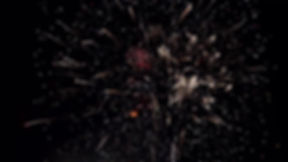
Hours: 10am to 10pm (Extended hours from July 1st - July 4th)
THE PYROTECHNIC INDUSTRY


An anomaly among other industries, commercial fireworks are sold on a seasonal basis during the weeks before the Fourth of July. During this momentous celebrations of our country’s history, hundreds of thousands of Americans around the world celebrate their patriotism in various ways through parties, barbeques, and, especially, fireworks. The pyrotechnic industry has thrived in several ways throughout recent years. According to the American Pyrotechnics Association (APA), Consumer Fireworks Revenue in 2015 was $755 million, increasing 8.6% from 2014. This is a trend that many foresee to continue as retail fireworks have sold tremendously even through the recession. The industry has a noteworthy effect on local economies as permits are required to be purchased on both a state and city level to operate a fireworks stand and must be renewed annually. Additionally, fireworks are often purchased in conjunction with other products such as party supplies, food, and alcohol, benefitting local retailers of these products as well.
The earliest fireworks were invented in 7th century China, and, today, most fireworks are still manufactured there and shipped overseas to the United States. Here, wholesalers (like Phantom, Big, World Class, Black Cat, and TNT) purchase large shipments of their products and store them in warehouses across the country, where commercial retailers can order from to be delivered to their stores. These processes are regulated by several government agencies such as the the Occupational Safety and Health Administration, the U.S. Consumer Product Safety Commission, the Department of Transportation and several more to ensure that safety standards are met during the manufacturing of the fireworks to the point where they are discharged by the consumer. Although local, family-run businesses dominate the market share for the industry, some organizations do have a large competitive advantage over these small stores in that they are parts of larger chains. For example, Phantom Fireworks, an Ohio-based retailer has multiple locations across most states, totaling 1,200. Because there are few major players in the retail pyrotechnic industry, competition is more focused on local areas where small businesses comprise the industry’s market share.
The pyrotechnic industry in general (manufacturers, wholesalers, and retailers) faces issues regarding regulations concerning safety and shipping while complying with various agencies. Many regulations are designed to protect the consumer from injury. In an interview with Politico, the Executive Director of the APA related the difficulties the relatively small industry faces as her association “represents small family businesses who are trying to do their very best to survive” (Samuelsohn, 2015). These regulations affect fireworks manufacturers who must increase their prices in order to sustain their businesses due to inflated shipping and other costs. Because of this, small family-run businesses also suffer from raised prices of consumer fireworks. Additionally, due to these heavy regulations, a significant barrier to entry, the pyrotechnic industry requires large initial investments to secure permits, pay salaries, and purchase inventory. In fact, IBISWorld reports that 49.8% of the specialty retail store industry’s revenue is used to secure inventory.
The reason that regulations are heavily enforced is due to the fact that firework safety is another issue that affects retailers. In recent years, the industry has received attention due to safety concerns. According to the Wall Street Journal, two acts of terrorism in 2010 and 2013 (the failed Times Square bombing and the Boston Marathon bombing) were somewhat related to firework retailers, leading to a reexamination of regulations governing the industry (Maremont, 2013). Although this is the case, several prominent figures in the industry such as Vice President of Phantom Fireworks William Weimer have argued that consumer fireworks are not able to be modified to make dangerous explosives. As investigation into these events were conducted, no links were found between fireworks purchased by terrorists to the bombs used in these events. While many criticize the industry for several reported cases of injuries to children, the APA reports that in recent years, the number of firework-related injuries are decreasing while the amount of fireworks being purchased are increasing (American Pyro).
Many of these safety concerns have even outlawed the use of certain fireworks known as M-80s and cherry bombs in favor of less harmful fireworks categorized as “Safe N Sane.” In fact, 20 states allow only these safer products such as sparklers, snappers, and fountains, while possessing more dangerous products are punishable by fines and even imprisonment in some cases (Golden, 2006). This, while keeping people safe, hinders a small industry ripe for growth. Selling larger fireworks like artillery shells or cakes are the primary means by which small retail stores earn their revenues, and restricting these outlets from selling larger products decreases their incomes, state income from applying for permits, and constrains an entire industry.





Articles on Pervasive Issues in the Pyrotechnic Industry
<http://teach.belmont.edu:2219/docview/1336132176/B28496A9733C49D5PQ/1?ccountid=8570>.
http://teach.belmont.edu:2219/docview/463543029/308C2F7D35154E8APQ/9?accountid=8570
.png)